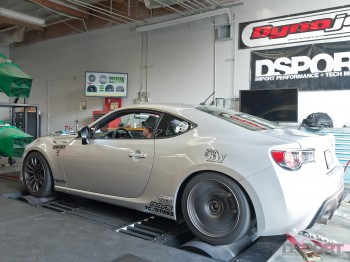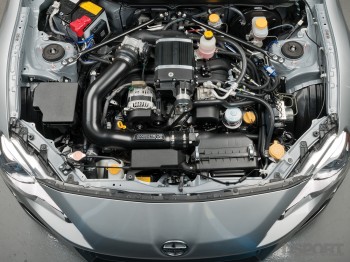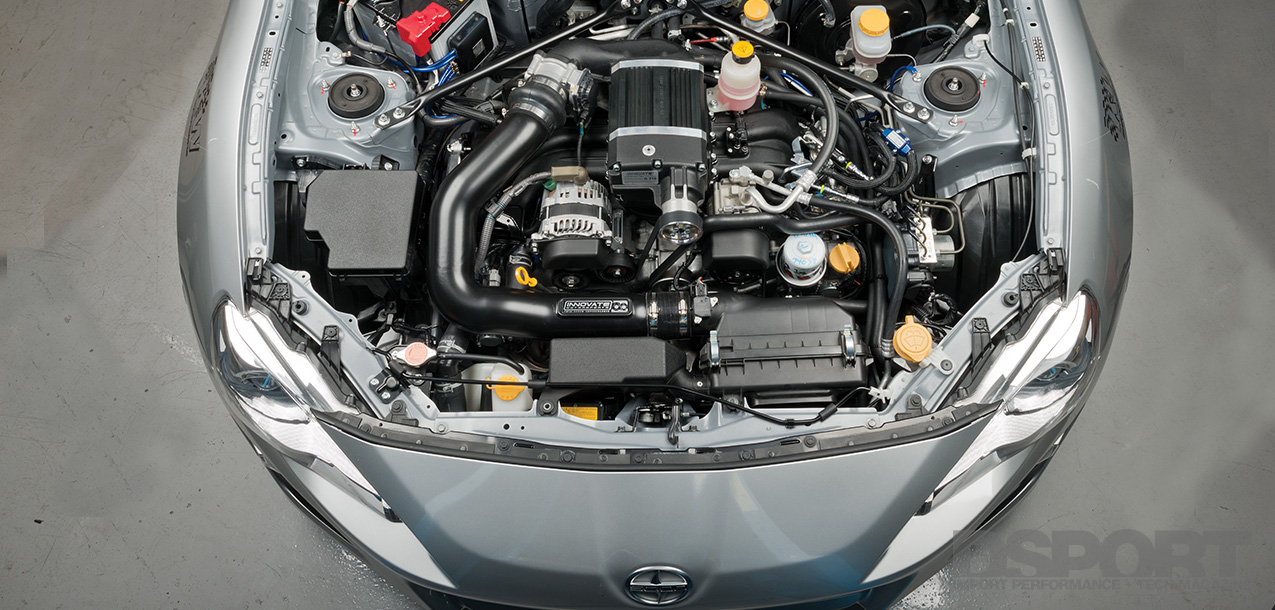The Scion FR-S and Subaru BRZ represent the best entry-level, rear-wheel-drive sport compacts on the market. While capable of turning on a dime, most enthusiasts agree the FR-S needs more power. CARB-legal intake and exhaust upgrades can add up to 15 more wheel horsepower, raising the FA20’s output to 180- to 185-peak wheel horsepower. For serious improvements, forced induction is the only real solution. Worried about smog? Innovate recently completed the CARB compliance of its intercooled, supercharger system for the 2013-2014 FR-S and BRZ.
Text by Aidan Spraic // Photos by Jun Chen
 THE MULE
THE MULE
What is knock? Engine knock or detonation is the combustion of anywhere from one to multiple pockets of unburnt air-fuel mixture that occurs outside of the planned combustion window. When this occurs, the mistimed explosion sends a potentially devastating shockwave and increased cylinder pressures. The result of such an event could be anything from accelerated wear in the combustion chambers to a catastrophic engine failure.
For daily driven cars, CARB compliance is a must. Our D’Garage FR-S is used as a daily driver, but it spends much of its time as a test mule on the DSPORT dyno and at various tracks. On the track, the one thing that can eclipse the excitement of overtaking another driver in a turn is the disappointment of giving the pass back on the straightaway. This made the FR-S a perfect candidate on which to install and test Innovate’s supercharger kit.
 SUPERCHARGER SCENARIO
SUPERCHARGER SCENARIO
For the BRZ/FR-S supercharger system, Innovate selected a positive-displacement, twin-screw supercharger design rather than a centrifugal- or roots- style charger. The Sprintex S5-210 supercharger was designed to provide a very flat torque curve and near instantaneous boost. While both families of supercharger, positive displacement and centrifugal, rely on the crankshaft to power the compressor, each design has significantly different characteristics. Positive-displacement superchargers are quick workers that deliver peak boost nearly instantaneously when the gas pedal goes to the floor regardless of engine speed. If a positive-displacement supercharger has the pulley ratios set up to deliver 8 psi of boost pressure, it will deliver roughly 8 psi of boost pressure regardless of engine speed. In contrast, centrifugal superchargers deliver boost relative to engine speed. For example, a centrifugal supercharger that delivers 4 psi of boost pressure at 3,500 RPM is likely to deliver very close to 8 psi of boost pressure at 7,000 RPM.
 Besides exhibiting different boost curve characteristics, positive-displacement and centrifugal superchargers also differ in efficiencies. A compressor’s efficiency relates to how much power is required to generate a particular mass flow rate. A low-efficiency supercharger consumes more horsepower by parasitic drag from the crankshaft to reach a certain pressure ratio and mass flow rate. Hence, when looking for a compressor, higher efficiencies are always the aim. Historically, centrifugal superchargers offered the highest compressor efficiencies, followed by screw-type, positive-displacement superchargers and finally non-screw, roots-type, (comma) positive-displacement superchargers. As technology progressed, the positive-displacement superchargers’ efficiencies improved and now operate with greater than 75 percent efficiency. However, the “size” of a supercharger and the speed at which it runs also affects efficiency. Hence, the system, regardless of supercharger type, must be engineered to operate the right size supercharger at the right speeds for peak efficiencies and performance.
Besides exhibiting different boost curve characteristics, positive-displacement and centrifugal superchargers also differ in efficiencies. A compressor’s efficiency relates to how much power is required to generate a particular mass flow rate. A low-efficiency supercharger consumes more horsepower by parasitic drag from the crankshaft to reach a certain pressure ratio and mass flow rate. Hence, when looking for a compressor, higher efficiencies are always the aim. Historically, centrifugal superchargers offered the highest compressor efficiencies, followed by screw-type, positive-displacement superchargers and finally non-screw, roots-type, (comma) positive-displacement superchargers. As technology progressed, the positive-displacement superchargers’ efficiencies improved and now operate with greater than 75 percent efficiency. However, the “size” of a supercharger and the speed at which it runs also affects efficiency. Hence, the system, regardless of supercharger type, must be engineered to operate the right size supercharger at the right speeds for peak efficiencies and performance.


